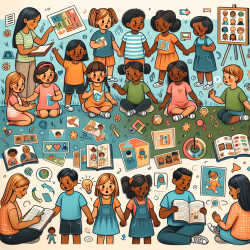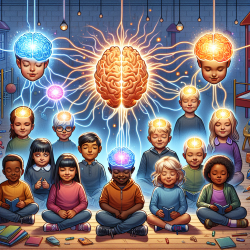Introduction
The field of speech-language pathology is continuously evolving, with new research and technological advancements offering innovative solutions to improve therapeutic outcomes for children. One such promising development is the application of 2D organic materials, as discussed in the research article "2D Organic Materials: Status and Challenges." These materials, known for their unique optical and electrical properties, hold significant potential in various fields, including biomedicine and sensor development. This blog explores how practitioners can leverage these materials to enhance child therapy services, particularly in online settings.
Understanding 2D Organic Materials
2D organic materials are formed by combining organic molecular materials with two-dimensional structures, resulting in materials with exceptional properties. These materials can be synthesized on a large scale and are highly customizable, making them ideal for various applications. The research article divides these materials into five categories: metal-organic frameworks (MOFs), covalent-organic frameworks (COFs), hydrogen-bonded organic frameworks (HOFs), perovskite, and molecular crystals. Each category offers distinct advantages, such as flexibility, large surface areas, and low weight, which are beneficial for developing advanced therapeutic tools.
Applications in Child Therapy
In the context of child therapy, 2D organic materials can be instrumental in creating innovative therapeutic devices and tools. For instance, their application in sensor development can lead to more accurate and sensitive diagnostic tools. These sensors can be integrated into online therapy platforms, providing real-time feedback and data-driven insights into a child's progress. This integration allows therapists to tailor interventions more precisely, enhancing the effectiveness of therapy sessions.
Encouraging Further Research
While the potential applications of 2D organic materials in child therapy are promising, further research is essential to fully realize their benefits. Practitioners are encouraged to explore collaborations with researchers in materials science to develop new therapeutic tools and methods. By staying informed about the latest advancements in 2D materials, therapists can adopt cutting-edge technologies that improve therapy outcomes for children.
Conclusion
The integration of 2D organic materials into child therapy represents a significant step forward in enhancing therapeutic outcomes. These materials offer unique properties that can be harnessed to develop innovative tools and techniques, particularly in online therapy settings. By embracing these advancements, practitioners can provide more effective and personalized care to children, ultimately leading to better therapeutic results.
To read the original research paper, please follow this link: 2D Organic Materials: Status and Challenges.










